

Matt Campbell
2026 Hyundai Tucson Hybrid review
2 Hours Ago
The Corolla Cross takes the no-nonsense, all-round appeal of the world's most popular car and turns it into an SUV.
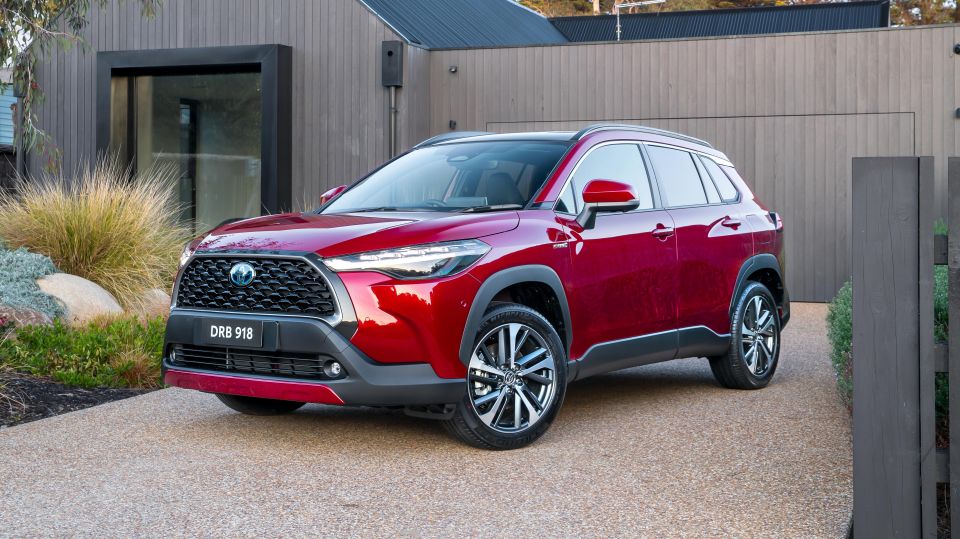


Marketplace Editor

Marketplace Editor


Marketplace Editor

Marketplace Editor
Where expert car reviews meet expert car buying – CarExpert gives you trusted advice, personalised service and real savings on your next new car.
What happens when you cross the world’s most popular vehicle nameplate with an SUV? Well, you get the Toyota Corolla Cross.
Toyota already has one of the most comprehensive SUV line-ups in the industry, with at least one in every segment, and the arrival of the Corolla Cross heralds a two-pronged assault on the hotly-contested Small SUV segment – which already has over 20 entrants.
Alongside the more coupe-styled C-HR, the 2023 Toyota Corolla Cross hopes to take the brand’s market share in the segment beyond 21 per cent, which is more than three times Toyota’s current share of the Small SUV market.

With its boxy, more conservative looks, hybrid-heavy line-up, swathes of available technology, and one of the most recognised names in the automotive world, the Corolla Cross should be a guaranteed success.
Add to that the fact the slightly larger RAV4 Hybrid is currently experiencing wait times of over 18 months for some variants, the new model could serve as an alternative to Australia’s top-selling SUV for those who don’t want to wait.
But, is it any good? We attended the Australian media launch in Sydney to find out.
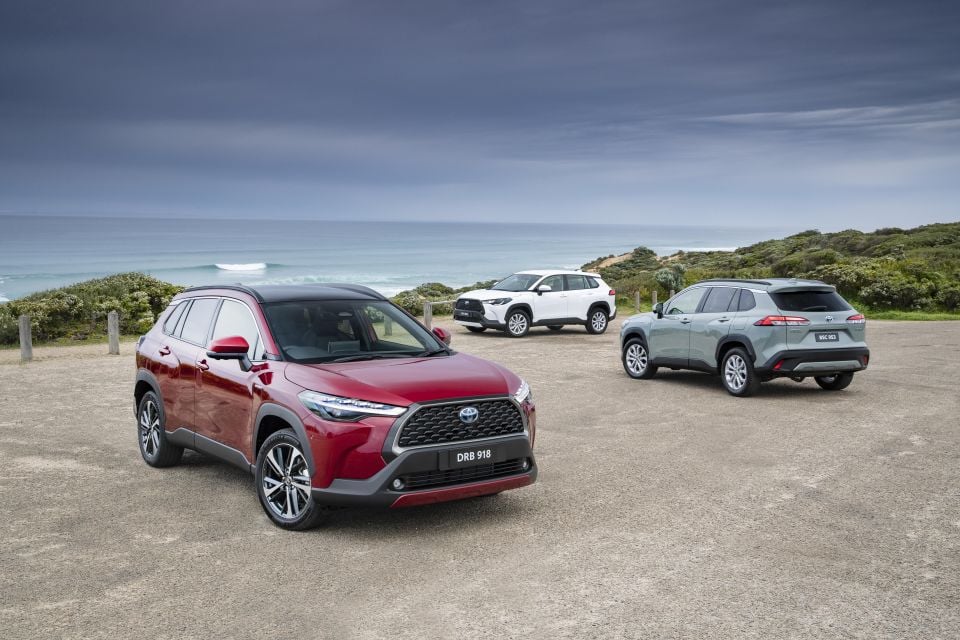
Considering the industry trend of increasing prices and expensive electrified options, the Corolla Cross’s pricing is fairly reasonable.
Pricing starts at $33,000 before on-road costs for the base GX 2WD petrol, while the cheapest hybrid is $35,500 before on-road costs. You can get into a petrol-electric Corolla Cross for under $40,000 drive-away according to the brand’s online configurator.
The Corolla Cross goes further than the C-HR by offering AWD Hybrid power as well, in the form of a more powerful 2.0-litre system with Toyota’s latest fifth-generation hybrid technology. Australia misses the more powerful 2.0-litre hybrid versions of the Corolla and C-HR offered overseas.

2023 Toyota Corolla Cross pricing:
Prices exclude on-road costs
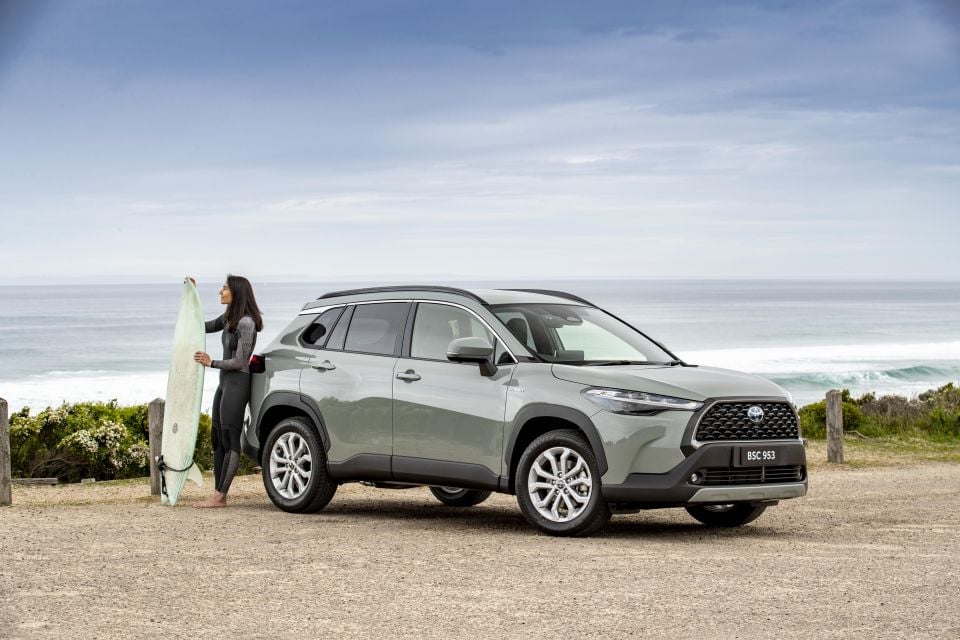
Being on the larger side of small, the Corolla Cross is positioned competitively relative to rivals. The turbocharged UK-built Nissan Qashqai kicks off at $33,890 before on-roads, with the e-Power hybrid to only be offered on high-grade ST-L and Ti variants – indicating a starting price of around $45,000 for the electrified model.
Meanwhile, the smaller Toyota C-HR starts at $30,915 for the cheapest GXL 2WD with its 1.2-litre turbo petrol engine, though the less powerful 1.8-litre hybrid is reserved for the high-spec Koba and GR Sport versions, requiring a $37,665 spend.
Even China’s GWM Haval Jolion Hybrid can’t offer a cheaper hybrid option, though the sole electrified variant of the Jolion at $40,990 drive-away is based on the top-spec model, while the equivalently-priced Corolla Cross is a base model.
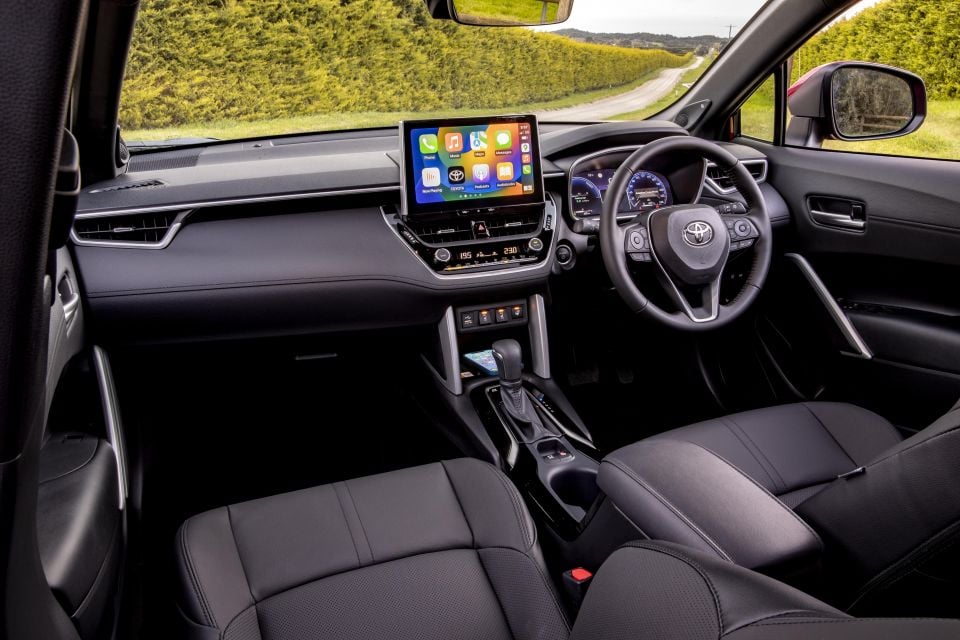
Buy your new car without the stress. It's fast, simple and completely free.

Great service from Travis and team, second time I have used this business would not hesitate to recommend them to anyone
Craig C.
Purchased a Ford Ranger in Sunshine Coast, QLD
CarExpert helped Craig save thousands on his Ford Ranger, now let us save you on your next new car.
Find a dealThe Corolla Cross features a cabin obviously inspired by its hatchback and sedan stablemates, with a few differences to set it apart.
A highlight is the new-generation infotainment system, which is offered in two variations depending on model.
Base GX models get an 8.0-inch touchscreen without satellite navigation, but it still offers DAB+ digital radio and wireless Apple CarPlay – Android Auto is wired. Even the base unit is a marked improvement over the current system, which offers dated, low-res graphics and laggy response times.
Pairing an iPhone wirelessly is a quick and easy process, and all models score a 12-month Toyota Connected Services subscription – meaning there’s app-based remote functions and data available via a smartphone, and inside the cabin you can use the “Hey Toyota” intelligent voice assistance to adjust the temperature, open the windows, or even search for the nearest public toilet.
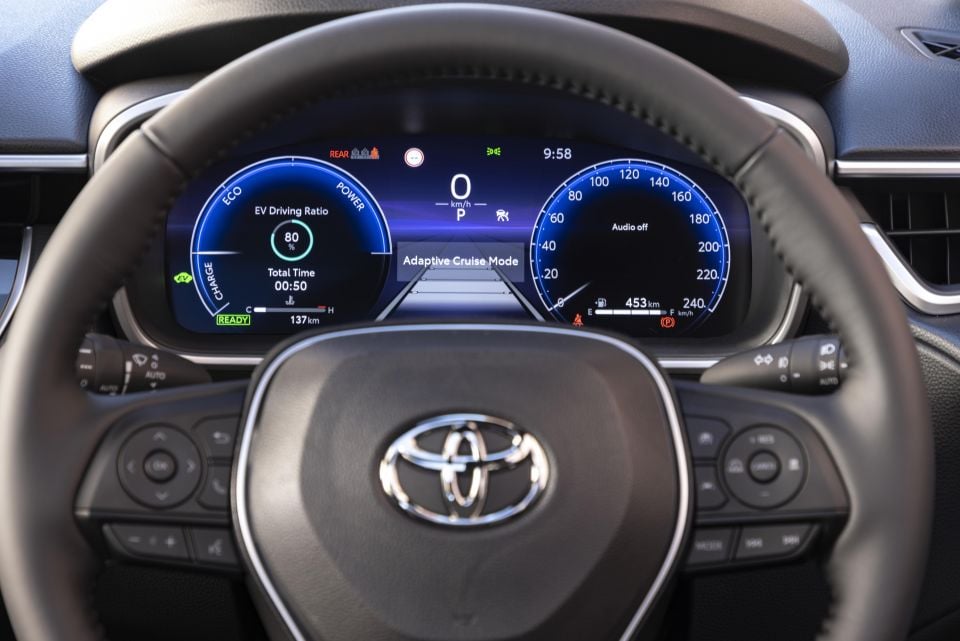
The lattermost function is only available with the GXL and Atmos, given the GX doesn’t feature embedded satellite navigation. It’s a handy if novel set of functions that currently aren’t widely available in the mainstream segments with the exception of Ford’s FordPass Connect.
GXL and Atmos models get a 10.5-inch display with satellite navigation, which likewise is connected for live traffic updates and is voice assistant-compatible. If the smaller system is a marked improvement, the 10.5-inch display is a revelation compared to existing Toyota systems – though it’s only really in line with rivals rather than being a new segment benchmark.
It’s a shame the subscription period is only 12 months, when most other programs are three years from sale, and the subscriptions get a bit pricey from there. If you want the full suite of connected services, ongoing monthly charges for both the Connect+ and Multimedia packages are priced at $9.95 and $12.50 respectively – more details here.
Atmos models debut a 12.3-inch digital instrument cluster understood to be coming to high-grade versions of the Corolla and RAV4 later this year, and will likely filter out across other models. It’s not quite VW slick and sharp, but it’s clean, easy to read, and offers a range of customisation options.
If you go for the GX or GXL, you get a more basic 7.0-inch digital cluster which looks like it’s been pulled straight out of the much more expensive Lexus NX.
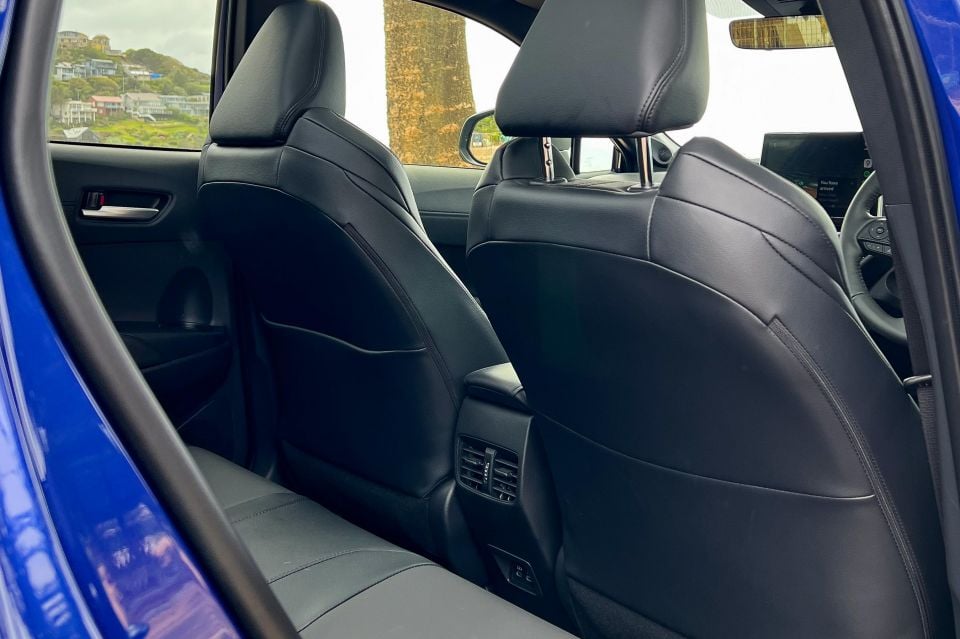
Build and material quality is typically solid, with a mix of soft-touch and harder wearing materials, as well as licks of piano black trim. The switchgear below the display is just like the Corolla’s and works well, and adds a pop of silver to break up all the black.
Comfort up front is pretty good, with supportive seats offering a range of adjustment for the driver – the passenger misses height adjustment, even in the Atmos. The steering wheel is a good size and uncluttered in terms of multifunction switchgear, and likewise offers a good range of adjustment.
The second row isn’t quite RAV4-spacious but even a larger adult like myself (6’1) can fit behind my their own driving position in relative comfort – I will note the Atmos’s fixed panoramic roof does eat into headroom if, like me, you’re on the taller side.
Amenities include rear air vents, a map pocket behind the front passenger, ISOFIX and top-tether points, and a pair of USB-C ports behind the rear console if you get the GXL and Atmos.

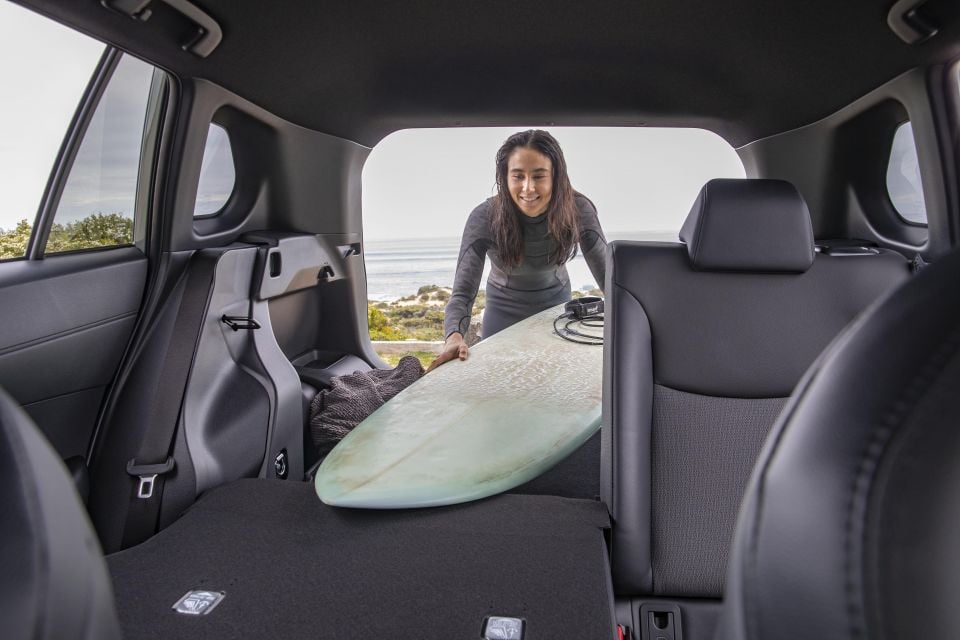
Boot capacity ranges depending on variant:
Corolla Cross 2WD (including hybrid) versions get a temporary space-saver spare wheel under the boot floor, while AWD Hybrid models get a tyre repair kit.
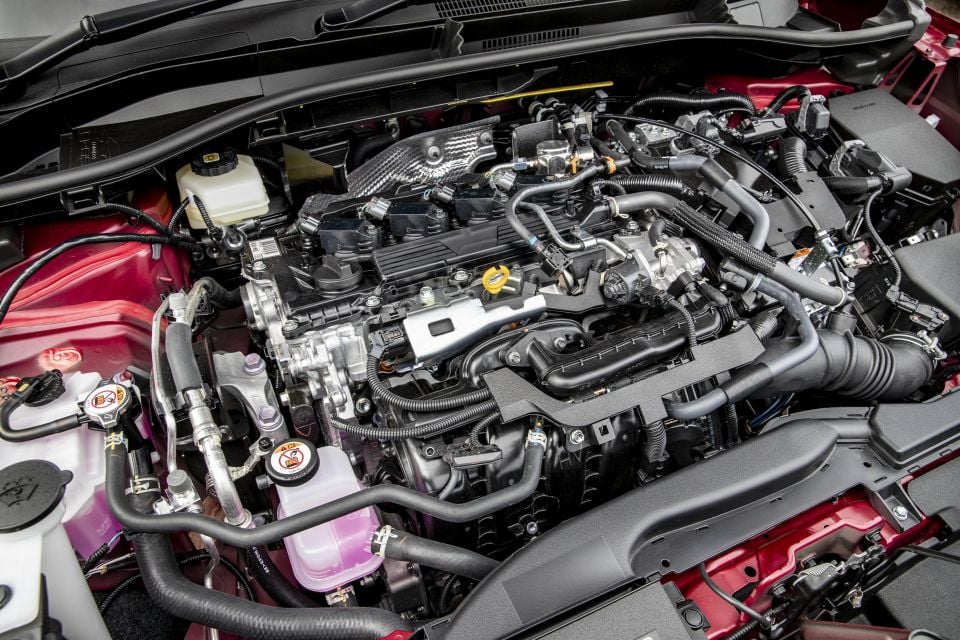
The Corolla Cross offers two powertrains; a 2.0-litre ‘Dynamic Force’ naturally-aspirated petrol engine, as well as a 2.0-litre petrol-electric hybrid – the former is front-drive (2WD) only, the latter offers 2WD and AWD options.
Toyota says the base 2.0-litre petrol develops 126kW at 6600rpm, and 202Nm between 4400 and 4900rpm. Drive is sent exclusively to the front wheels via a continuously variable transmission (CVT) which features 10 virtual ‘speeds’ in its Manual mode, as well as a launch gear – a similar unit is offered in the Corolla Hatch and Sedan.
Combined fuel consumption is quoted at 6.0L/100km, while CO2 emissions are rated at 136g/km. Unlike some other vehicles in the Toyota line-up, the petrol engine doesn’t feature idle stop/start technology.
The hybrid, meanwhile, teams an Atkinson cycle 112kW/190Nm 2.0-litre atmo four with an 83kW/206Nm electric drive motor and 4.08Ah lithium-ion battery pack – making for a 146kW system power output. Toyota doesn’t quote combined torque figures for its hybrid systems.
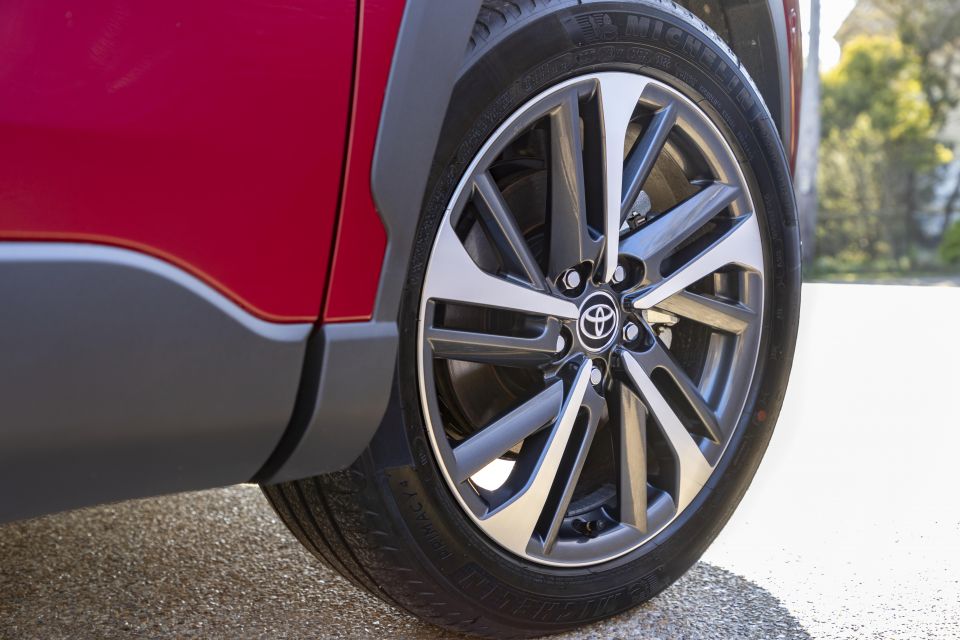
If you opt for AWD, there’s an additional 30kW motor on the rear axle facilitating electrified all-wheel drive. AWD Hybrid models also switch the standard torsion beam rear suspension system for a more sophisticated multi-link setup.
Corolla Cross Hybrid models use 4.3-4.4L/100km (2WD-AWD) on the combined cycle, with CO2 emissions rated at 97-101g/km. Regardless of the drivetrain, the hybrid sends drive through an e-CVT.
All versions of the Corolla Cross run on regular 91 RON unleaded, with fuel tank capacity dependent on the drivetrain. 2WD petrol versions get a 47-litre fuel tank, while 2WD Hybrid and AWD Hybrid offer 36L and 43L tanks respectively.
Toyota quotes a 0-100 time of 9.0-9.2 seconds for the petrols and 7.5-7.7 seconds for the hybrids. Top speed for the Corolla Cross 2WD petrol is 198km/h, while the hybrids manage 180km/h.
All versions of the Corolla Cross are rated to tow up to 750kg (braked).
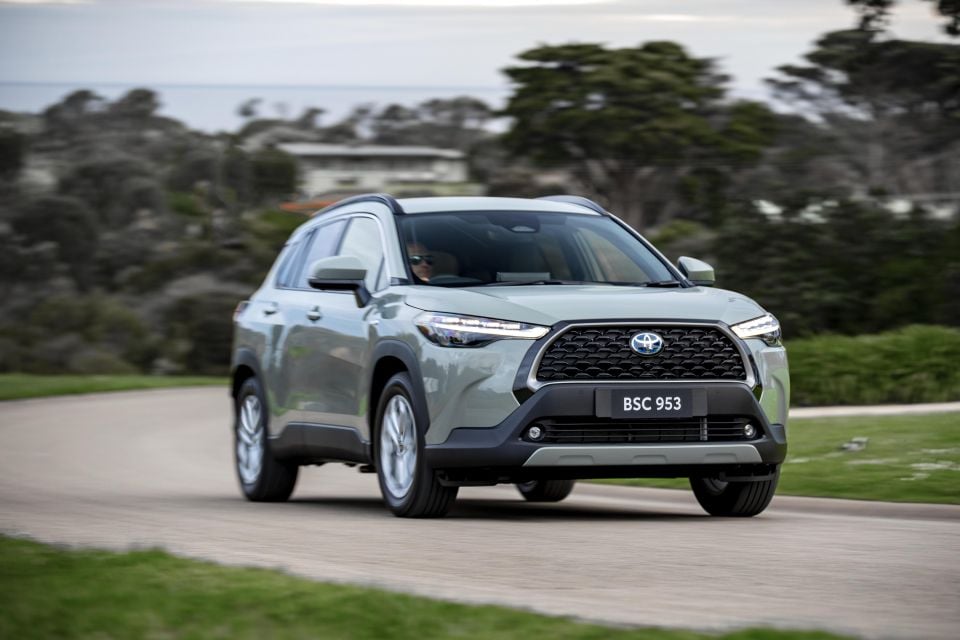
During our launch drive from Sydney to Whale Beach and back we sampled several Corolla Cross variants, including the Atmos 2WD and 2WD Hybrid, as well as the entry-level GX 2WD.
Starting off in the top-spec petrol, we drove the Corolla Cross out of Double Bay on the south side of Sydney, navigating tight city streets, undulating terrain, and attempted to avoid the city’s peak-hour traffic.
The 2.0-litre petrol is a decent unit, offering linear acceleration and working with the CVT automatic in normal driving. It gets along fine and the CVT simulates shifts as the speed climbs – just don’t hammer it if you don’t like the flarey, gruff engine sound that comes with it.
We traversed a mix of roads on our way to the Northern Beaches, taking the long way around the west side of the CBD. City streets and suburban highways were dealt with ease, as they would be in the normal Corolla.
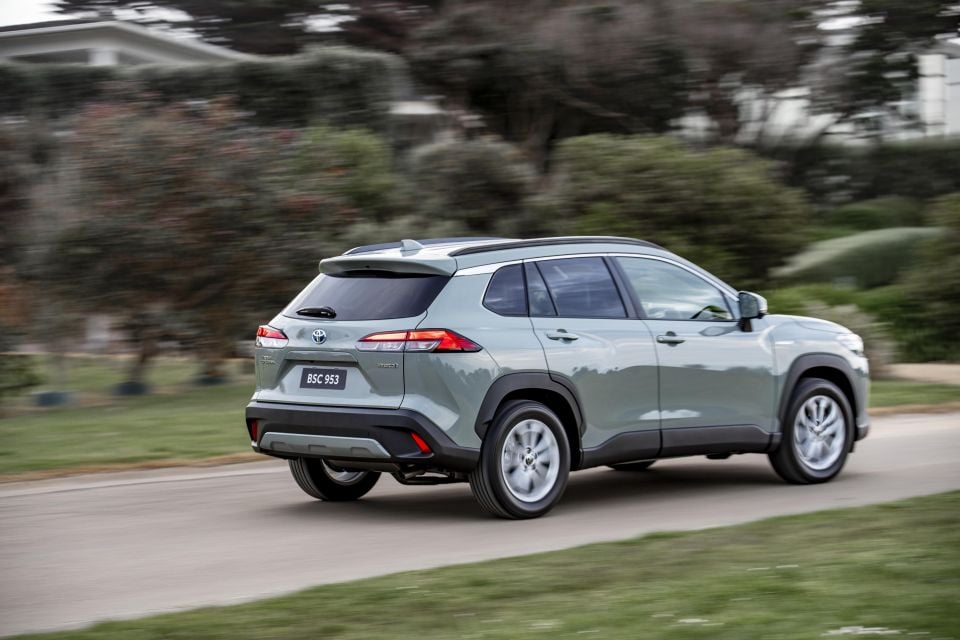
Performance isn’t what you’d call inspiring in the petrol, but the accurate, fluid steering and balanced body control mean the Corolla Cross doesn’t feel like a clumsy, loping SUV when things get twisty. It’s not the sharpest of small SUVs, but it’s far from boring and upholds Toyota’s more recent focus on driver engagement well.
Outward visibility is likewise good, a pleasant change over the swoopy C-HR design. The square body and tall glasshouse mean the Corolla Cross is easy to place whether you’re slotting into gaps in traffic or trying to make a parallel park – fun fact, the driver’s eye point is 130mm higher than the standard Corolla.
Overall refinement at a cruise is pretty impressive, given other vehicles on this TNGA platform can get a bit rowdy on the rougher stuff. That’s even with the Atmos’s 18-inch alloys and 225/50 Michelin Primacy 4 tyres, and the ride gets better on the GX’s 17s and more forgiving Bridgestone Alenza 215/60 rubber.
Hopping into the Atmos 2WD Hybrid shortly after was more of the same, but with the added refinement and smoothness of electrified assistance. The Corolla Cross Hybrid is able to drive up to 40-50km/h solely on e-power.
There’s better low-down response thanks to the instant torque from the electric motor, and the petrol engine rarely feels strained or coarse in normal driving.
Like we’ve seen in other current Toyota hybrid models, the transition from electric to petrol is nigh on seamless, and having the beefier 2.0-litre petrol means there’s no distinct loss of torque when the petrol engine fires up like in the 1.8-litre system used by the regular Corolla and C-HR.
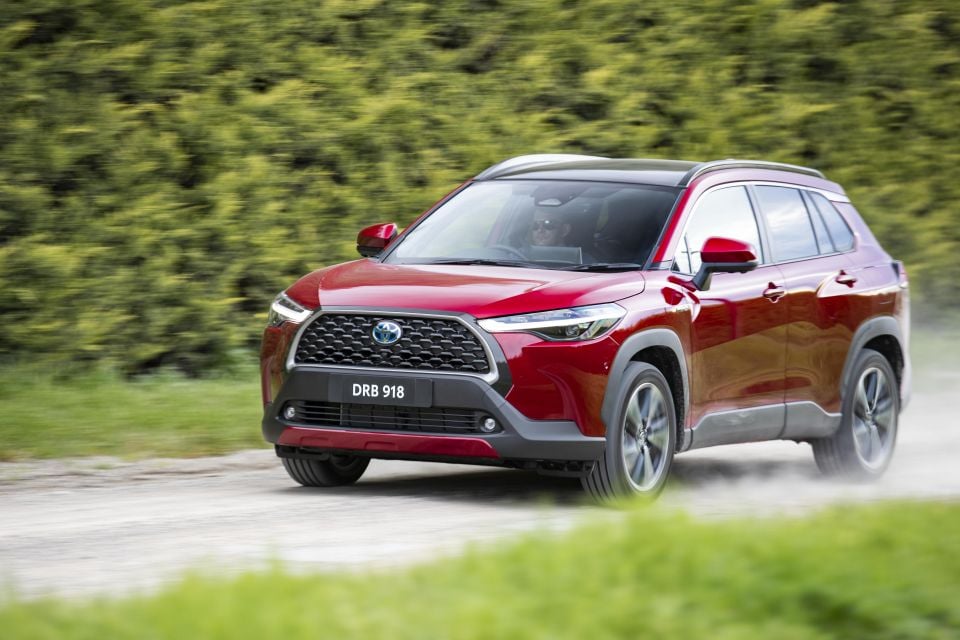
Where expert car reviews meet expert car buying – CarExpert gives you trusted advice, personalised service and real savings on your next new car.
Threading through the tight streets in an around Palm Beach and Whale Beach, the Corolla Cross Atmos 2WD Hybrid was able to draw more heavily on its electric components and spent most of the second loop indicating under 4.0L per 100km, dipping as low as 3.2L/100km at one point.
With some higher speed and uphill sections, we finished with an indicated 4.2L/100km, which is bang on Toyota’s claim and a mighty-impressive figure at that.
While the petrol-only was already quite refined at a cruise, the serenity of the hybrid is hard to beat. Cruising through suburban streets at 40-50km/h in EV mode makes it a comfortable thing to drive, and no doubt will make the school drop off or grocery run more relaxed.
Like the petrol, however, don’t expect to be thrilled when you put your foot down. The e-CVT will just flare revs if you punch it, so while Toyota claims an impressive 7.5-7.7-second 100km/h run, the sound is buzzy and not very pleasant. I tried hammering it from the lights and quickly lifted my foot.
As noted earlier, the ride is pretty supple even on 18s, and I was impressed with how the torsion beam rear suspension of 2WD models (petrol and hybrid) dealt with speed bumps and sharper hits. Unfortunately, I didn’t get a chance to drive an AWD Hybrid back-to-back with its multi-link rear suspension
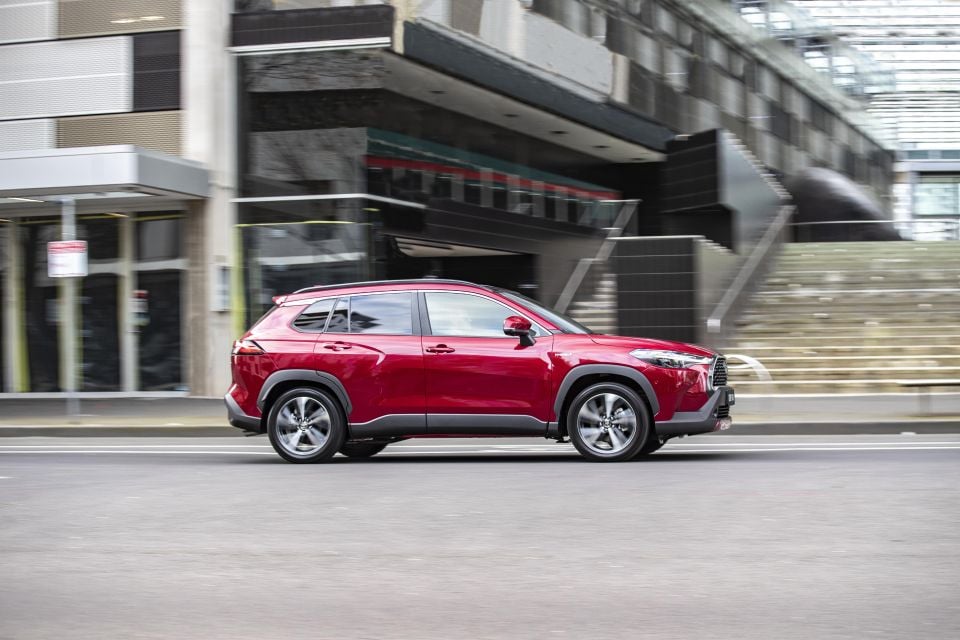
The Toyota Safety Sense suite of assistance technologies is fitted standard across the range, and this latest iteration of is arguably the best yet from the Japanese brand.
There’s a new button on the steering wheel that activates the adaptive cruise and Lane Trace Assist functions for semi-autonomous highway driving, and it proved very smooth and intuitive in Sydney’s heavy traffic and tight tunnel network.
Standard blind-spot monitoring and rear cross-traffic alert are likewise handy inclusions from the base level, given some brands require you spending on a high trim level to access some of these features.
There’s also a safe exit assist that triggers a light and audile warning if a door is about to be opened into oncoming traffic, using the blind-spot monitoring system – it could be the difference between a safe exit and collecting a cyclist.
One complaint, however, is the quality of the cameras. The surround camera in the Atmos was quite grainy, to the point where the display and associated graphics looked like they had been blown up from a smaller, low-res screen.
All-told, the Corolla Cross is an easy, no-frills bit of kit, that takes the competent all-round attributes of the Corolla Hatch and Sedan and applies them to a conventional SUV form factor.
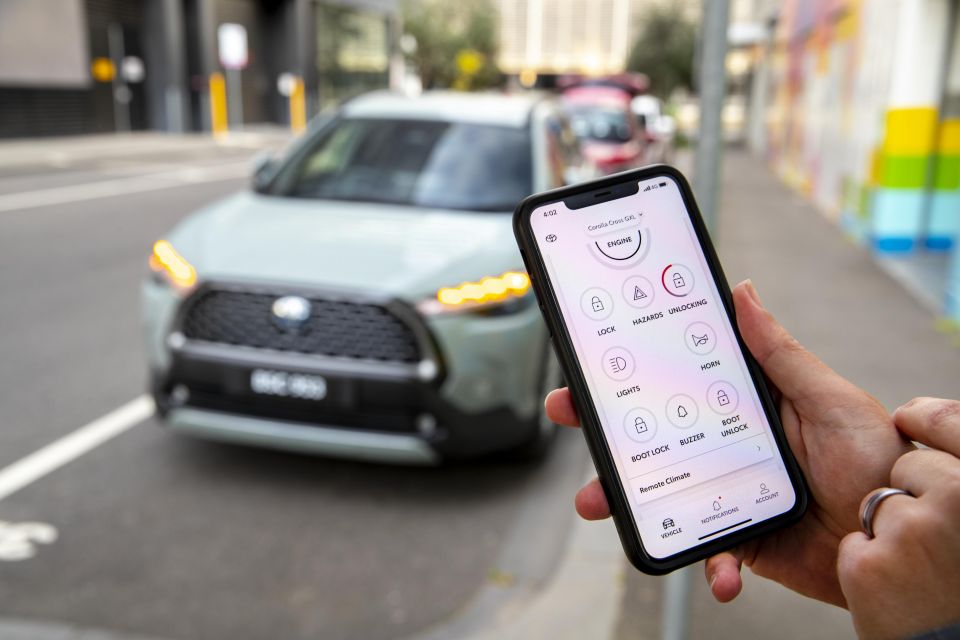
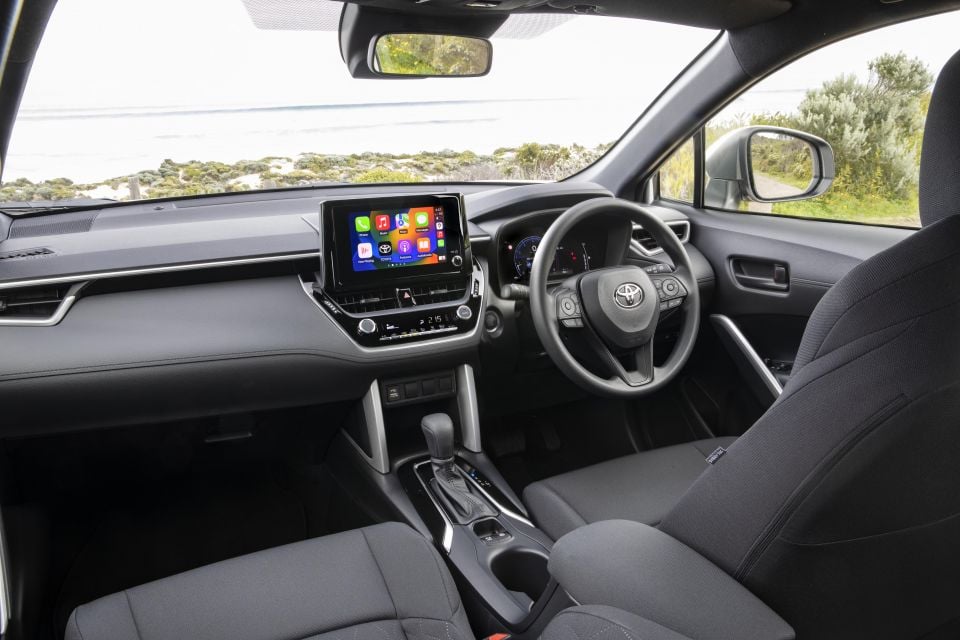
Corolla Cross GX highlights:


Corolla Cross GXL adds:
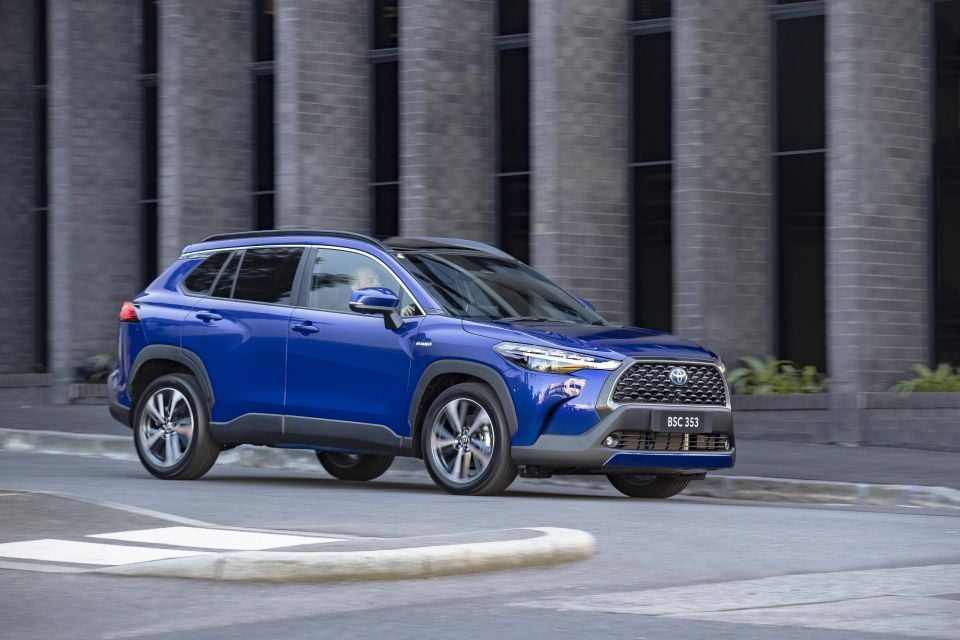
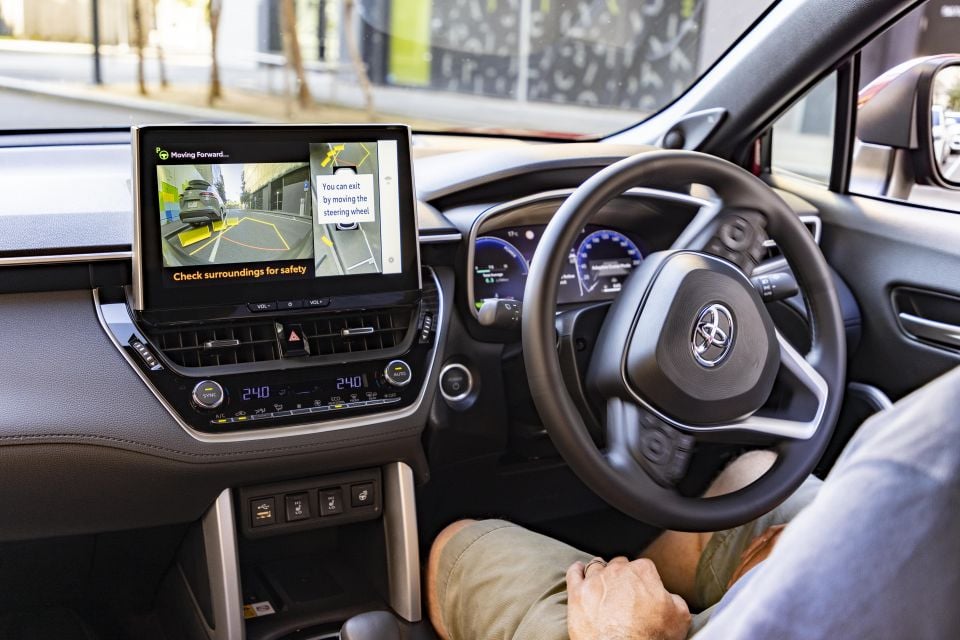
Corolla Cross Atmos adds:
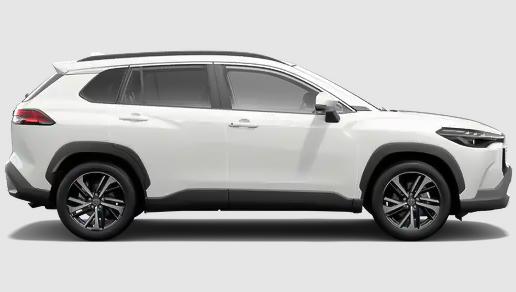
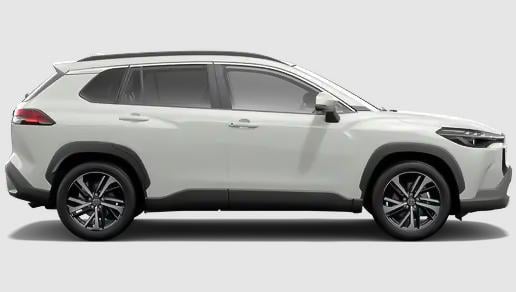
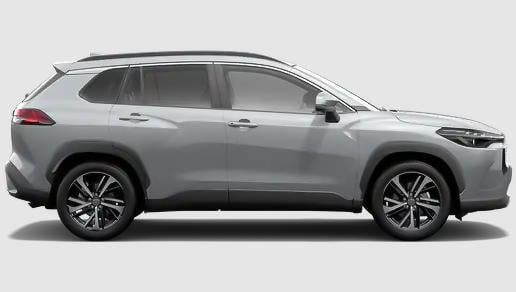
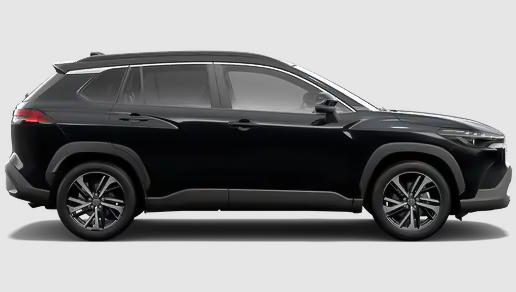
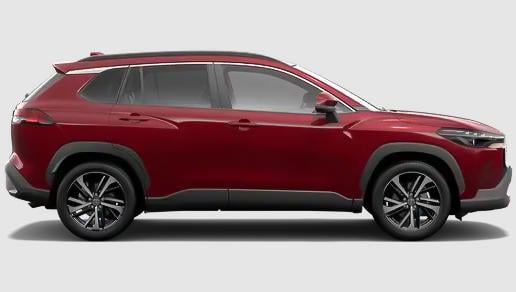
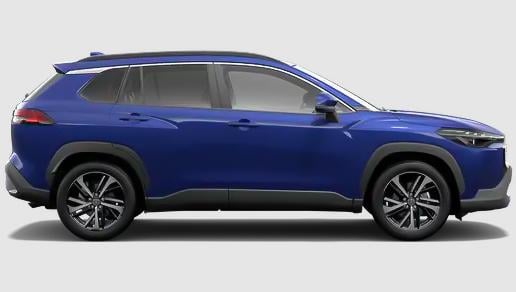

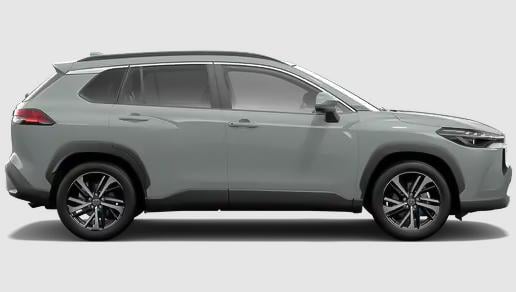
*Premium paint costs $575

The Toyota Corolla Cross hasn’t been crash tested by Euro NCAP or ANCAP yet, but given the related Corolla wears five-star ratings we’d expect a similar result when it is.
Standard safety features include:
GXL adds:
Atmos Hybrid adds:

The Corolla Cross is backed by a five-year, unlimited-kilometre warranty which extends to seven years on powertrain components if the car is serviced using Toyota’s capped-price service program.
Maintenance is required every 12 months or 15,000 kilometres – whichever comes first. Toyota offers affordable capped-price servicing for the Corolla Cross, with the first five services capped at $230 each.
As mentioned earlier, we achieved an indicated 4.2L/100km in the Atmos 2WD Hybrid, which is pretty much bang on Toyota’s claim. We saw in the mid- to high-6.0L/100km for the GX 2WD petrol, a bit up on Toyota’s 6.0L/100km claim, which saw a mix of city and highway driving, including some high-traffic stop-start conditions.
Not bad, and all models can run on 91 RON unleaded.
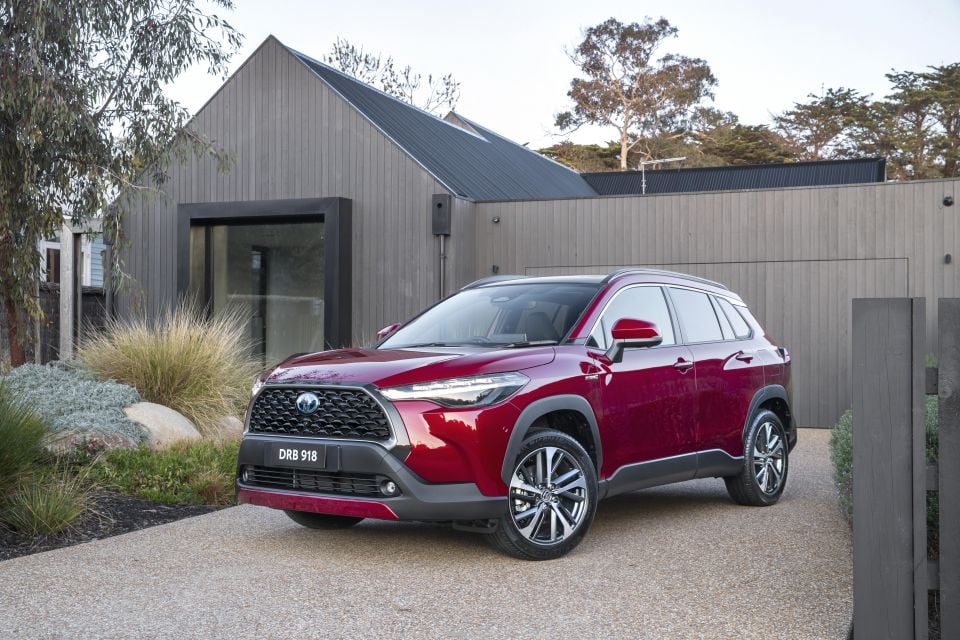
It may not set the world on fire, but the Corolla Cross has all the makings of a new sales favourite.
Such is the Toyota way, the jacked-up Corolla barely puts a foot wrong without really excelling in any given area. It’s a no-nonsense, no-frills SUV that will no doubt appeal in some way to most, if not all demographics, much like its hatchback and sedan counterparts.
That’s not to say it’s boring, given the funky colour options, as well as the fluid and pleasant drive experience; plus the hybrids are so efficient that the $2500 premium over the standard petrol seems like a no-brainer. Further, it’s pretty much a ‘just right’ size, given the C-HR is a bit too out there and the RAV4 ‘too big’ for some.
Having a hybrid variant count that outnumbers petrols or diesels is another point of difference, and will cater to our market’s increasing demand for electrified products. Props to Toyota for again demonstrating leadership in this space – though I know some vocal commenters here will be lamenting the lack of a plug-in or EV option.
My pick? GXL 2WD Hybrid for value, Atmos 2WD Hybrid for best feature set.
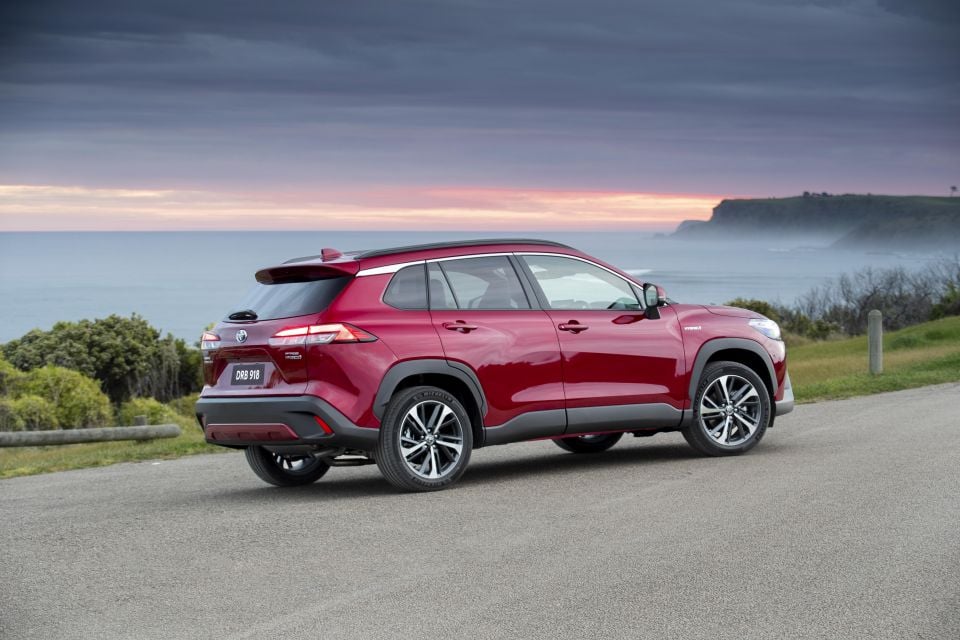
Click the images for the full gallery
Where expert car reviews meet expert car buying – CarExpert gives you trusted advice, personalised service and real savings on your next new car.
James Wong is an automotive journalist and former PR consultant, recognised among Australia’s most prolific motoring writers.


Matt Campbell
2 Hours Ago


Max Davies
18 Hours Ago


William Stopford
18 Hours Ago


Derek Fung
19 Hours Ago


Max Davies
1 Day Ago


William Stopford
2 Days Ago